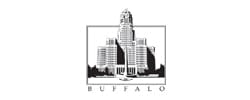Vision Screening
Firefighter Services of Ontario assesses vision according to the NFPA standards. Medical conditions that can affect a candidate’s ability to safely perform essential job tasks are designated as either Category A or Category B. Candidates with Category A medical conditions will not be certified as meeting the medical requirements of the NFPA standard. Candidates with Category B conditions shall be certified as meeting the medical requirements of the NFPA standard only if they can perform the essential job tasks without posing a significant safety and health risk to themselves, members, or civilians.
Candidates wearing contact lenses must remove them prior to the visual examination. Please remember to bring your contact solution and case.
Category A
Medical conditions include the following:
- Far visual acuity. Far visual acuity less than 20/40 binocular, corrected with contact lenses or spectacles. Far visual acuity less than 20/100 binocular for wearers of hard contact or spectacles, uncorrected.
- Color perception. Monochromatic vision resulting in inability to use imaging devices.
- Monocular vision.
- Any eye condition that results in a person not being able to safely perform essential job tasks.
Category B
Medical conditions include the following:
- Diseases of the eye such as retinal detachment, progressive retinopathy, or optic neuritis.
- Ophthalmological procedures such as radial keratotomy, Lasik procedure, or repair of retinal detachment.
- Peripheral vision in the horizontal meridian of less than 110 degrees in the better eye or any condition that significantly affects peripheral vision in both eyes.
NOTE: NFPA standard for eyes and vision include in their category A medical conditions Colour Perception: “monochromatic vision resulting in inability to use imaging devices”. Applicants are screened using colour plates on a Ishihara test for colour blindness. If the applicant fails this test the Farnsworth D-15 test is used. An applicant that fails the Ishihara can still pass the Farnsworth D-15 demonstrating they are not monochromatic thus demonstrating they can operate imaging devices. A severe failure of the D-15 would indicate monochromatic colour vision and a failure of the eye and vision section of the NFPA.


































